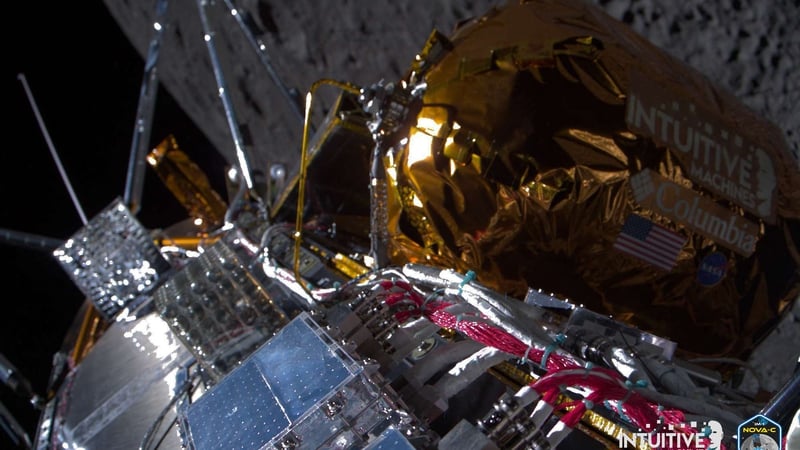
24 Feb 2024
The moon lander known as Odysseus is "alive and well" but resting on its side a day after its touchdown as the first private spacecraft ever to reach the lunar surface, and the first from the US since 1972, the company behind the vehicle has said.
The vehicle is believed to have caught one of its six landing feet on the lunar surface near the end of its final descent and tipped over, coming to rest sideways, propped up on a rock, an analysis of data by flight engineers showed, according to Houston-based Intuitive Machines.
Still, all indications are that Odysseus "is stable near or at our intended landing site" close to a crater called Malapert A in the region of the Moon's south pole, said Stephen Altemus, chief executive officer of Intuitive Machines, which built and flew the lander.
"We do have communications with the lander," and mission control operators are sending commands to the vehicle, Mr Altemus said, adding that they were working to obtain the first photo images from the lunar surface from the landing site.
A brief update on the mission's status posted to the company's website yesterday described Odysseus as "alive and well."
It was initially reported the vehicle was upright, however, that conclusion was incorrect
The company had said shortly after touchdown that radio signals indicated Odysseus, a 3.96ml hexagonal cylinder, had landed in an upright position, but Mr Atlemus said that incorrect conclusion was based on telemetry from before the landing.
Although the lander's horizontal position is far from ideal, company officials said that all but one of the six NASA science and technology payloads were mounted on portions of the vehicle left exposed and receptive to communications, "which is very good for us," Mr Altemus said.
"We think we can meet all the needs of the commercial payloads" as well, he added.
Less promising was the fact that two of the spacecraft's antennae were left pointed at the surface, a circumstance that will limit communications with the lander, Mr Altemus said.
Also, the functionality of a solar energy panel on the top of Odysseus, now facing the wrong way, is uncertain, but a second array on the side of the spacecraft appears to be in working order, and the spacecraft's batteries had been fully charged, he said.
Watch: US spacecraft completes historic Moon landing in first for private sector
Intuitive Machines mission director Tim Crain said the spacecraft, burning a propulsion fuel of liquid methane and liquid oxygen for the first time in space, "performed flawlessly" during its flight to the Moon.
The uncrewed robot spacecraft reached the lunar surface on Thursday after a tense final approach and descent in which a problem surfaced with the lander's navigation system, requiring engineers on the ground to employ an untested work-around at the 11th hour.
It also took some time after an anticipated radio blackout to re-establish communications with the spacecraft and determine its fate some 384,000km from Earth.
When contact was finally renewed, the signal was faint, confirming that the lander had touched down but leaving mission control immediately uncertain as to the precise condition and position of the vehicle, company officials said during a webcast of the event on Thursday evening.
Mr Crain said he believed that the payloads aboard the lander would be able to operate for about nine or ten days, after which the sun will have set on the polar landing site.
